
Passámos pela Ponte Vecchio e caminhávamos em direcção ao Duomo quando ao olhar para uma rua á direita a torre do Palácio Vecchio se foi revelando, chegámos á Piazza della Signoria. Parece um museu ao ar livre, por todo o lado vemos estátuas que podemos apreciar sem pagar bilhete, é certo que grande parte são réplicas mas se não tens tempo de ver o David na Accademia podes ver aquí ainda que numa versão menos detalhada.
We passed through the Ponte Vecchio and walked towards the Duomo when looking into a street to the right the tower of the Palace Vecchio was revealing itself we had reached Piazza della Signoria. Looks like an open air museum, everywhere we see statues that we can enjoy without paying, it is certain that most are replicas but if you do not have time to see the David at the Accademia you can see here even if it is a less detailed versión.
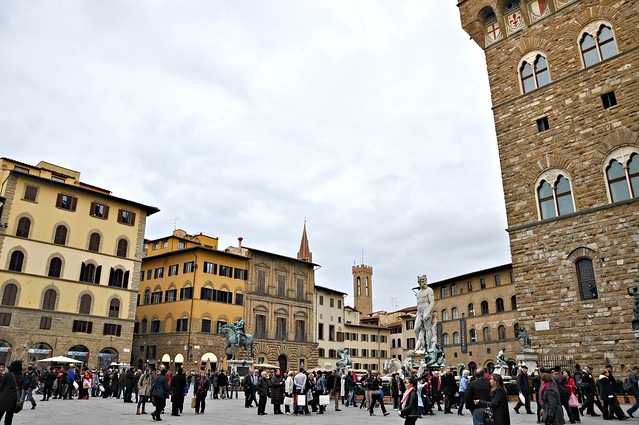
O Palácio Vecchio é o edificio mais marcante desta praça foi construído entre o século XIII e XIV. No século XVI, numa das épocas mais douradas de Florença, Vasari ficou a cargo da remodelação do Palacio onde viviam os de Médici.
Funciona como museu e também como sede do municipio de Florença. Junto á sua entrada duas esculturas famosas, uma é de David do Michelangelo e a outra é o Hércules de Bandinelli.
Ao lado na Loggia dei Lanzi podemos ver mais esculturas célebres como a Perseu segurando a cabeça da Medusa (Cellini) e o Rapto das Sabinas (Giambologna).
Do lado esquerdo do Palacio podemos ver a Fonte de Neptuno, dedicada aos feitos marítimos da cidade e podemos entender o porquê de não ter sido bem recebida, a estátua de Neptuno não encaixa muito bem nas proporções da fonte.
Por último uma referência á estátua de Cosme I, foi durante o seu dominio de Florença que esta praça ganhou relevância.
The Palazzo Vecchio is the most striking building in this square it was built between the XIII and XIV century. In the sixteenth century, one of the most golden eras of Florence, Vasari was in charge of remodeling the palace where the Médici lived.
It is a museum and it also is the seat of the municipality of Florence. Next to its entrance two famous sculptures, one of Michelangelo's David and the other is the Hercules of Bandinelli.
Beside it in the Loggia dei Lanzi we could see more famous sculptures as Perseus holding the head of Medusa (Cellini) and the Rape of the Sabine women (Giambologna).
On the left side of the Palazzp we can see the Neptune Fountain, dedicated to the maritime deeds of the city and we can understand why it was not well received, the statue of Neptune does not fit very well in the proportions of the fountain.
Finally a reference to the statue of Cosimo I, it was during his dominition of Florence that this square gained prominence.
It is a museum and it also is the seat of the municipality of Florence. Next to its entrance two famous sculptures, one of Michelangelo's David and the other is the Hercules of Bandinelli.
Beside it in the Loggia dei Lanzi we could see more famous sculptures as Perseus holding the head of Medusa (Cellini) and the Rape of the Sabine women (Giambologna).
On the left side of the Palazzp we can see the Neptune Fountain, dedicated to the maritime deeds of the city and we can understand why it was not well received, the statue of Neptune does not fit very well in the proportions of the fountain.
Finally a reference to the statue of Cosimo I, it was during his dominition of Florence that this square gained prominence.

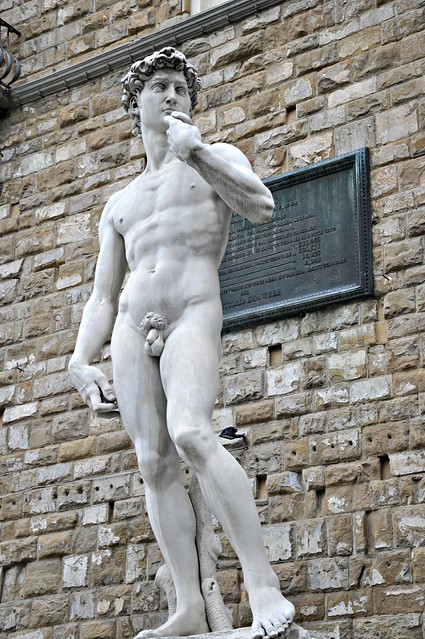

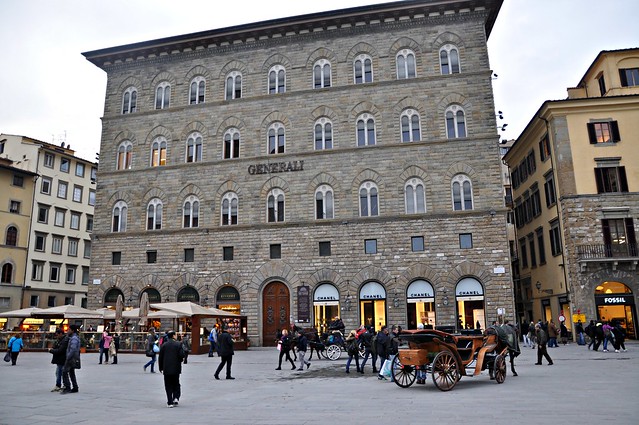
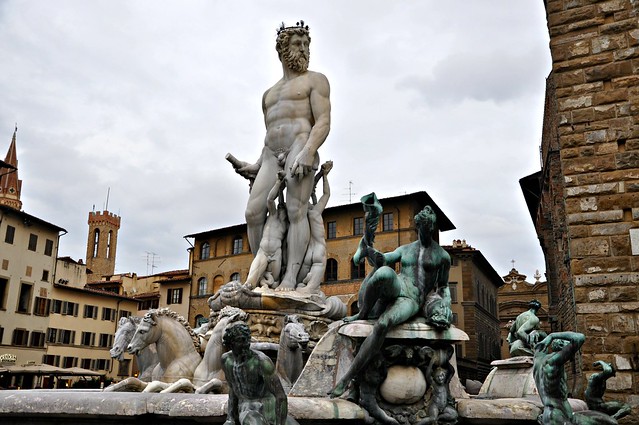
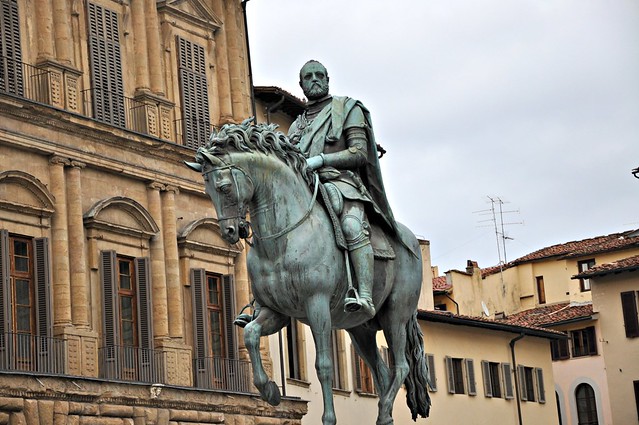
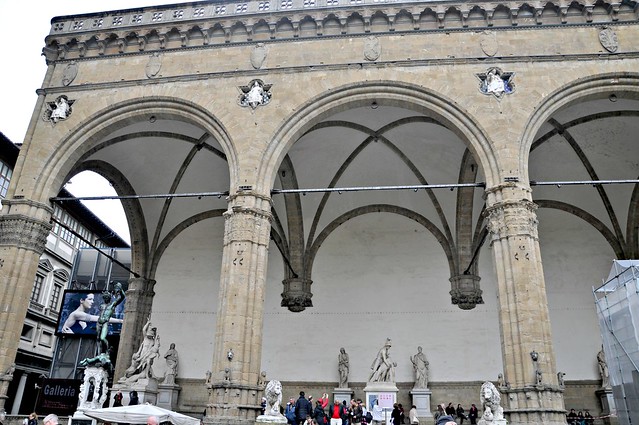
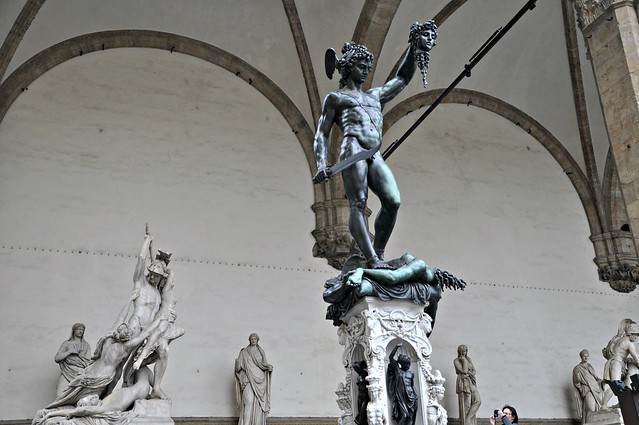

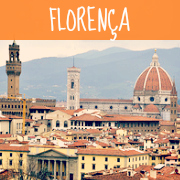
Sem comentários:
Enviar um comentário